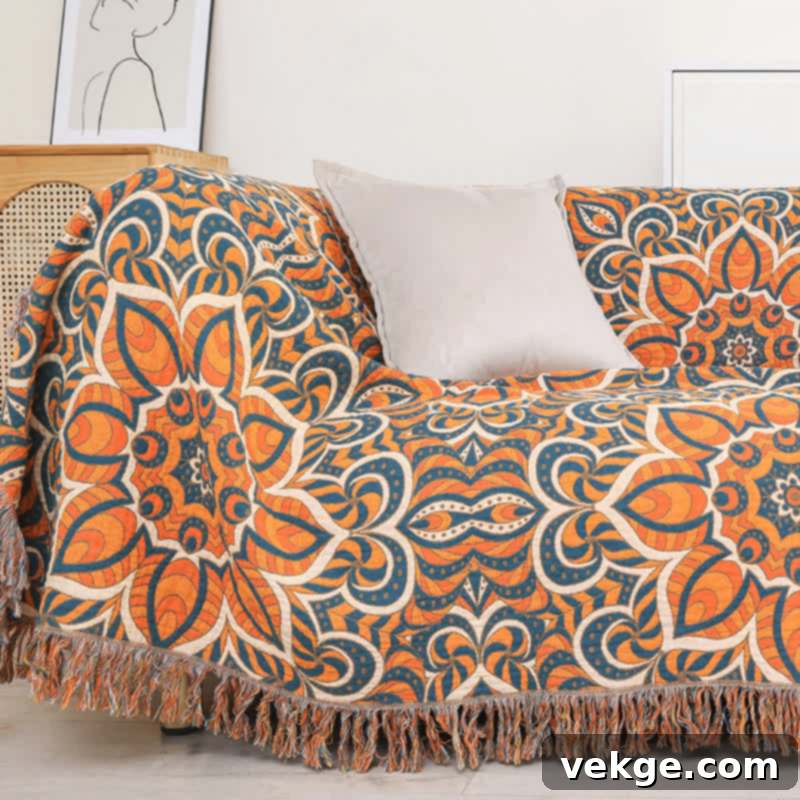Debunking Common Myths About Cotton Blankets: Your Ultimate Guide to Year-Round Comfort & Style
In the constant hustle and bustle of modern life, our homes serve as sanctuaries. Within these havens, simple items often provide the most profound sense of comfort. Among these, the humble cotton blanket stands out – a silent guardian of warmth and peace, yet frequently underestimated. Its widespread appeal and apparent simplicity conceal a myriad of misconceptions that prevent many from fully appreciating its true value. Dispelling these myths isn’t merely about correcting inaccuracies; it’s about revealing the remarkable versatility, durability, and essential role these blankets play in enhancing our comfort and well-being throughout every season of the year.
Through this comprehensive exploration, our aim is to illuminate the genuine worth and multifaceted utility of cotton blankets. We hope to ensure that their presence in our homes is not just recognized, but truly valued and understood for the exceptional benefits they offer. Our journey through these common fallacies will empower readers to see the cotton blanket anew – not merely as a basic home accessory, but as a vital, adaptable, and often luxurious component of daily coziness that significantly contributes to a comfortable and mindful living space.
1. Cotton Blankets are Only Suitable for Summer
The widespread notion that cotton blankets are exclusively designed for balmy summer evenings is a significant misrepresentation of their true capabilities. While their breathability and moisture-wicking properties certainly make them a summer staple, these attributes also contribute to a surprising adaptability that renders them ideal for every season. This myth often overshadows cotton’s remarkable ability to regulate body temperature, making it a year-round champion in bedding.
Unlike heavier, denser materials such as thick wool or synthetic fleece, which can trap heat and lead to uncomfortable overheating, cotton acts as a natural thermostat. Its loosely woven fibers allow air to circulate freely, preventing heat buildup in warmer climates. This same breathability, paradoxically, also keeps you cozy when temperatures drop. During colder months, cotton’s fibers can trap a layer of warm air close to the body, providing insulation without the oppressive weight. This unique dual-action mechanism ensures you remain cool and dry during humid summer nights and comfortably warm as the mercury dips in autumn and winter.
The moisture-absorbing nature of this natural fiber is another key factor in its all-season performance. Cotton efficiently draws perspiration away from the skin, ensuring you stay dry and comfortable even on the warmest evenings. This prevents the clammy feeling often associated with synthetic fabrics. When the weather turns colder, the strategy shifts to layering. Consider pairing a lightweight cotton blanket with a thicker duvet or another cotton blanket. This simple layering technique creates insulating air pockets that provide substantial warmth without adding excessive bulk or making you feel weighed down. It’s clear, then, that cotton blankets are far more than just summertime accessories; they are versatile essentials that offer adaptable comfort year-round, effectively dispelling the misconception of their seasonal limitation.
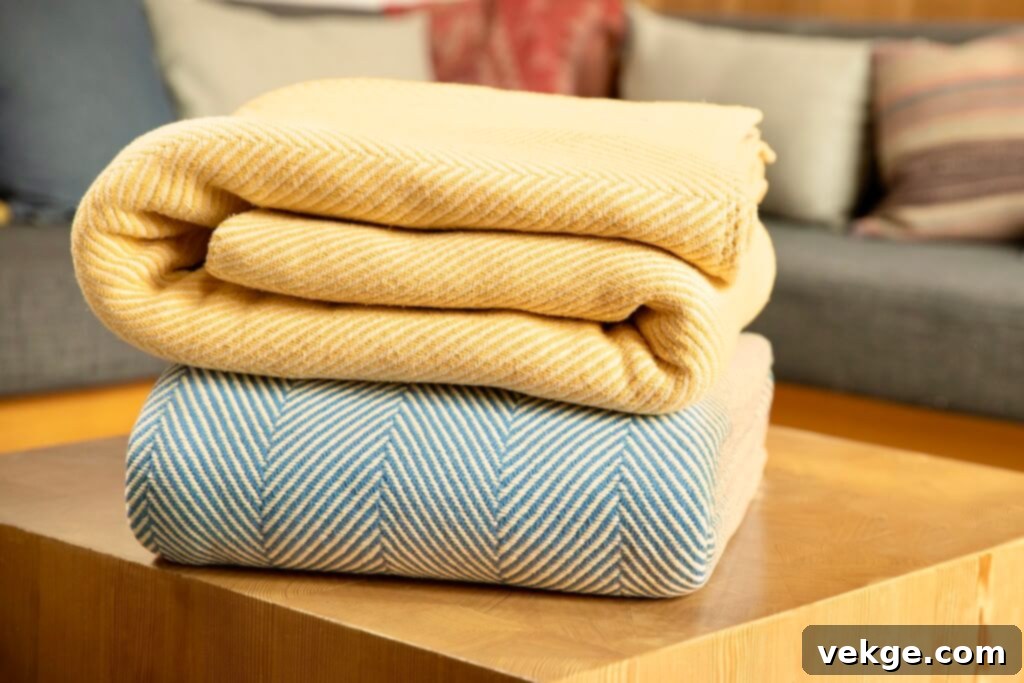
2. All Cotton Blankets are the Same
The assertion that all cotton blankets are identical is a profound oversight, completely disregarding the rich diversity and intricate craftsmanship inherent in the cotton textile industry. The world of cotton is vast, encompassing a wide spectrum of varieties, each boasting unique characteristics that contribute to distinct tactile experiences and performance qualities. For instance, the luxuriously soft and exceptionally durable feel of Egyptian cotton, renowned for its extra-long fibers, offers a stark contrast to the crisp, breathable texture of Upland cotton, a common variety, or the eco-conscious, gentle touch of organic cotton, cultivated without harmful chemicals.
Beyond the inherent qualities of the cotton fiber itself, the weave pattern plays an equally, if not more, crucial role in defining a blanket’s feel, weight, drape, and overall performance. A popular and highly functional option, the waffle weave, for example, is celebrated for its distinctive textured surface that enhances the blanket’s capacity to trap air. This creates a superior insulating effect, making it excellent for temperature regulation across various conditions – offering warmth in cooler settings and breathability when it’s warmer. Other weaves, like thermal weaves, are specifically designed to maximize warmth through intricate patterns that create many insulating air pockets. Sateen weaves, on the other hand, provide a smooth, lustrous finish that mimics silk, adding a touch of elegance and luxury.
It is also vital to recognize that the aesthetic appeal and intricate detailing on many cotton blankets are not merely achieved through printed graphics. Instead, they are often the result of sophisticated, expert weaving processes that create complex patterns directly within the fabric. This level of craftsmanship, whether it’s through jacquard weaving that produces elaborate designs or meticulous dyeing techniques that ensure colorfastness, unequivocally dispels the myth of uniformity. It guarantees that each cotton blanket is not only a delight to behold but also a testament to superior quality, enduring beauty, and thoughtful design, making every piece a unique addition to any home.

3. Cotton Blankets are High Maintenance
The pervasive misconception that cotton blankets demand extensive upkeep is, in reality, quite far from the truth. Cotton is genuinely one of the most user-friendly and easy-to-maintain textiles available, a characteristic that significantly contributes to its enduring popularity and timeless presence in homes worldwide. Unlike many other fabrics that often require specialized cleaning agents, delicate wash cycles, or professional dry cleaning services, cotton blankets thrive with straightforward, basic care guidelines, promising to retain their quality, softness, and vibrant appearance for years to come.
One of cotton’s most appealing features is its remarkable compatibility with machine washing. Most cotton blankets can be safely laundered in either warm or cold water, making them incredibly convenient for regular cleaning. The ability to frequently wash these blankets not only keeps them fresh but also ensures a hygienic sleeping environment, especially beneficial for allergy sufferers. Furthermore, the drying process is equally simple. Cotton blankets can typically be tumble dried on a low setting, which helps to minimize shrinking and maintain their original shape and inherent softness. Alternatively, they can be air dried, a method that is not only energy-efficient but also often preferred for preserving the fabric’s integrity and extending its lifespan.
Cotton’s inherent strength and resilience are key factors in its low-maintenance profile. This natural fiber is remarkably durable, designed to withstand numerous washes without losing its structural integrity, softness, or color vibrancy. This robust nature ensures that these blankets will continue to offer comfort and beauty, wash after wash. This ease of care not only underscores cotton’s practicality and convenience but also highlights its superiority as a material that effortlessly integrates into the demands of our busy modern lives, definitively debunking the myth of its supposed high maintenance and establishing it as an effortlessly practical choice for everyday luxury.

4. Cotton Blankets Cannot Be Luxurious
The notion that cotton blankets inherently lack the capacity for luxury is a persistent fallacy that demands to be thoroughly debunked. In reality, the realm of high-quality cotton textiles, particularly those utilizing premium blends and sophisticated weaving techniques, consistently produces blankets that rival, and often surpass, the plushness, elegance, and tactile richness of many traditionally perceived luxury materials. Luxury in cotton is not an oxymoron; it’s a testament to superior fiber selection and masterful craftsmanship.
Consider, for instance, varieties such as Supima cotton. Grown exclusively in the USA, Supima cotton is celebrated for its extra-long staple fibers, which are significantly longer and stronger than conventional cotton fibers. This inherent quality translates into a fabric that is not only incredibly soft and smooth to the touch but also exceptionally durable and resistant to pilling, maintaining its luxurious feel wash after wash. Similarly, Egyptian cotton, often considered the gold standard, boasts extra-long fibers that produce a remarkably fine, strong, and exceptionally soft yarn. Blankets crafted from Egyptian cotton offer a sumptuous, indulgent feel that provides both unparalleled comfort and a sophisticated aesthetic.
Beyond the raw material, the weaving technique plays a pivotal role in elevating a cotton blanket to luxury status. A sateen weave, for example, is not merely a pattern but a specific method of weaving that creates a fabric with a silky-smooth surface and a beautiful, subtle luster. This lustrous finish mimics the sheen of satin, significantly enhancing the blanket’s luxurious appeal and draping gracefully over any bed or sofa. Other advanced techniques, like jacquard weaving, allow for intricate, custom patterns to be woven directly into the fabric, adding layers of texture and visual sophistication that are unmistakably high-end. These prime examples vividly illustrate that with the right selection of premium cotton, meticulous craftsmanship, and innovative weaving, cotton blankets can indeed offer the profound sense of luxury and sophisticated style often sought in the most high-end bedding collections. This fact not only refutes the antiquated belief that cotton is somehow inferior but powerfully demonstrates cotton’s remarkable capacity to deliver both comforting warmth and exquisite style in perfect measure.
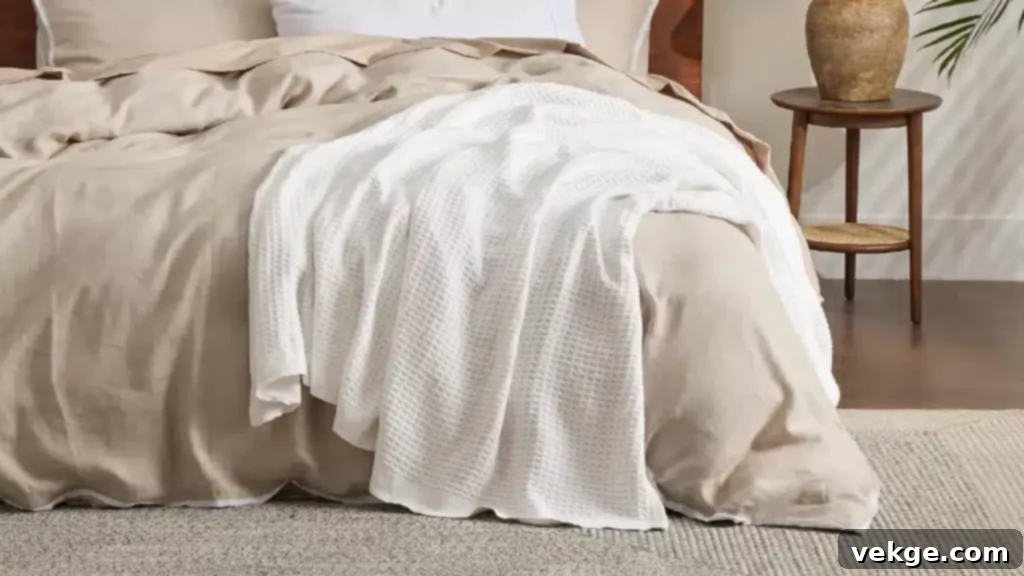
5. Cotton Blankets Don’t Provide Enough Warmth
The persistent belief that cotton blankets are inherently incapable of providing sufficient warmth is a myth that can be easily debunked by fully grasping the impressive versatility and inherent adaptability of cotton as a textile fiber. Far from being limited to light coverings, cotton can be engineered and utilized in ways that deliver substantial warmth, especially when employing intelligent strategies such as layering. This simple yet highly effective approach can dramatically enhance the insulating capabilities of cotton blankets, making them suitable even for cooler climates.
The principle of layering is rooted in physics: when multiple cotton blankets are stacked together, they create numerous tiny air pockets between each layer. These trapped air pockets act as exceptional insulators, effectively preventing body heat from escaping and blocking the penetration of cold air. This method allows for adjustable warmth; you can add or remove layers to perfectly match the ambient temperature, achieving an optimal level of comfort without the heavy, often restrictive feel of a single, bulky blanket. Furthermore, the construction of the cotton blanket itself plays a crucial role. Choosing cotton blankets with tighter weaves, such as those found in thermal or heavier weight cottons, significantly contributes to a warmer experience. Tightly woven fabrics naturally reduce the amount of air that can pass through, thereby increasing the blanket’s ability to retain body heat more efficiently and creating a denser, more insulating barrier against the cold.
This technique of thoughtful selection and layering is particularly effective in colder climates or during the chillier months, where maintaining core warmth is paramount for a good night’s sleep or comfortable lounging. Many manufacturers now also offer specially designed “thermal cotton blankets” that feature unique weaves specifically engineered to maximize heat retention while maintaining cotton’s natural breathability. Thus, through informed choices regarding weave density and the strategic use of layering, cotton blankets can indeed provide ample and adjustable warmth, thoroughly challenging the long-held misconception of their inadequacy in cooler temperatures and firmly establishing them as a reliable source of comfort.
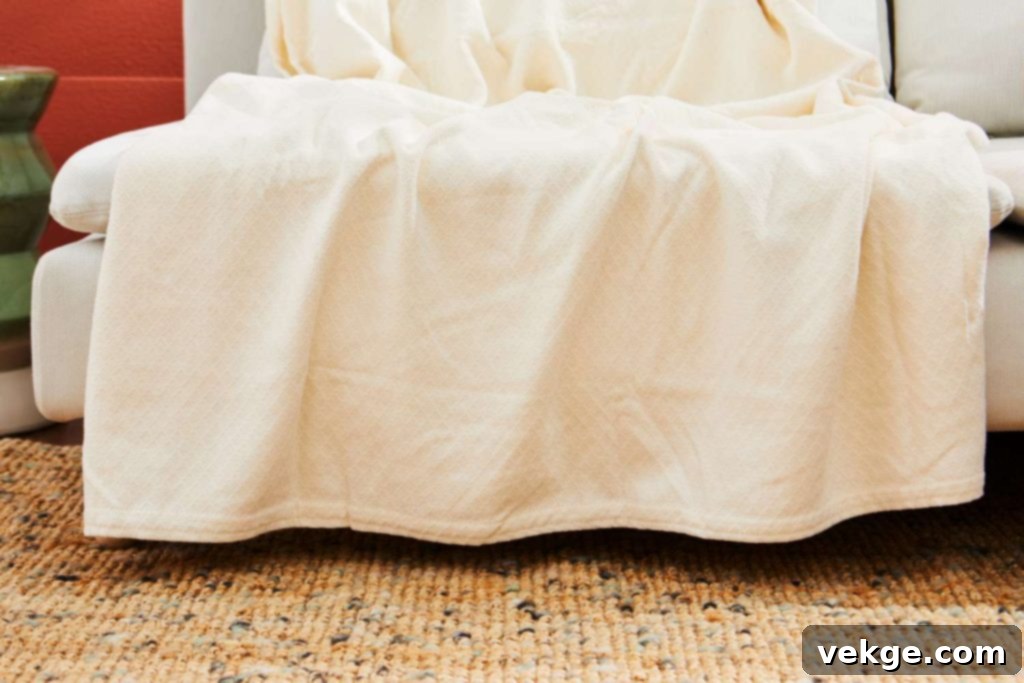
6. Cotton Blankets are Bad for Allergy Sufferers
The myth suggesting that cotton blankets are detrimental to allergy sufferers is a crucial misconception that warrants thorough clarification. In actuality, cotton’s natural fibers possess inherent hypoallergenic properties, making them an exceptionally good choice for individuals with sensitive skin, respiratory allergies, or conditions like eczema. This characteristic sets cotton apart from many synthetic alternatives and even some natural fibers that can exacerbate allergic reactions.
Unlike many synthetic materials, which often have tightly woven structures that can trap dust mites, pet dander, and other airborne allergens, cotton’s natural breathability is a significant advantage. The open structure of cotton fibers allows air to circulate more freely, discouraging the accumulation of dust mites, which thrive in warm, humid environments. This natural ventilation helps to reduce the presence of common irritants that can trigger allergic symptoms. Furthermore, cotton is less likely to harbor mold and mildew, common allergens in damp conditions, due to its moisture-wicking capabilities.
Perhaps one of the most significant benefits of cotton for allergy sufferers is its ease of cleaning. Cotton blankets can be frequently washed in hot water, a critical step for effectively killing dust mites and washing away other allergens like pollen and pet dander. This robust cleaning capability means that you can maintain an exceptionally clean and healthy sleeping environment with minimal effort, significantly reducing the risk of irritation and discomfort that allergies can cause. For individuals prone to allergies, opting for cotton blankets offers a soft, gentle, and non-irritating option that can profoundly improve their quality of sleep and overall well-being without compromising their health. This vital fact not only thoroughly challenges the erroneous belief about cotton and allergies but also powerfully highlights the fabric’s universal suitability, especially for anyone seeking a safe, hypoallergenic, and comfortable bedding solution.
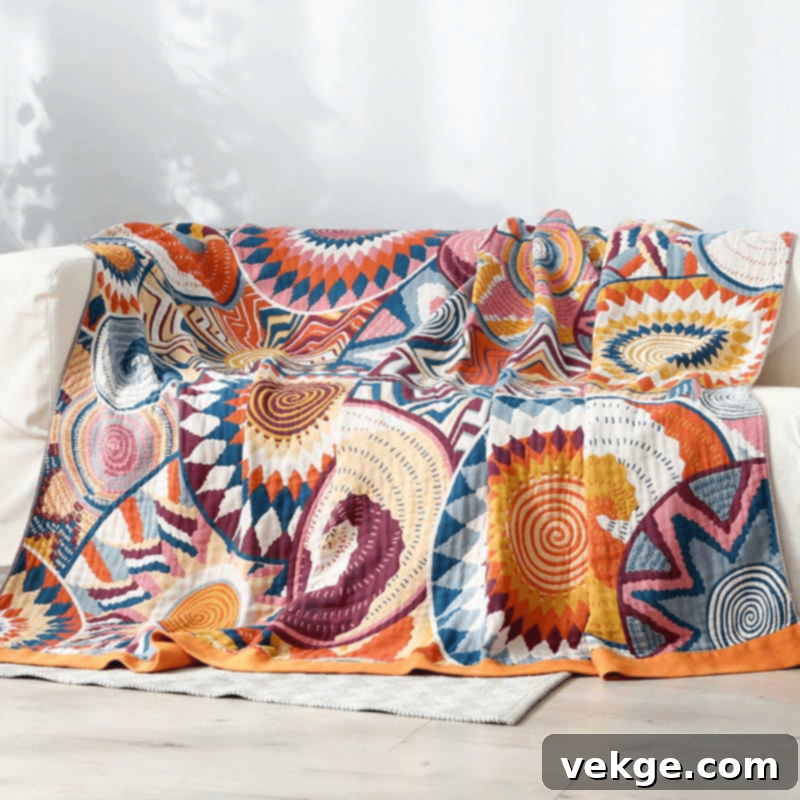
The Sustainability of Cotton Blankets
The sustainability of cotton blankets represents a crucial dimension that is often unfortunately obscured by lingering misconceptions about cotton farming. Cotton, particularly when cultivated through organic practices, truly embodies an eco-conscious approach to textile production, offering significant environmental benefits. Organic cotton cultivation specifically eschews the use of harmful synthetic pesticides, herbicides, and chemical fertilizers, which are notorious for polluting water sources, depleting soil quality, and harming vital ecosystems. By eliminating these toxic chemicals, organic farming practices protect biodiversity, support the health of farm workers, and ensure the long-term fertility of the land, creating a more balanced and thriving environment.
Choosing organic cotton blankets is therefore a direct act of supporting these sustainable farming methodologies. This conscious consumer choice directly contributes to a substantial reduction in the environmental footprint typically associated with conventional textile production. Furthermore, the inherent durability and robust nature of high-quality cotton blankets mean they are designed to last for many years. This longevity significantly reduces the need for frequent replacements, which in turn diminishes textile waste in landfills and conserves the resources required for manufacturing new items. When a cotton blanket does eventually reach the end of its long life, cotton is a natural fiber that is biodegradable, returning to the earth without leaving behind microplastic pollution common with synthetic fabrics.
This unwavering commitment to environmental sustainability, from responsible cultivation to a reduced waste lifecycle, vividly highlights the profound positive ecological impact of selecting organic cotton blankets. It effectively challenges the pervasive myth that cotton production is inherently detrimental to our planet, instead positioning it as a responsible and eco-friendly choice for discerning consumers who prioritize both comfort and environmental stewardship.
Conclusion: Embracing the Truth About Cotton Blankets
Our journey through the interwoven fabric of common misconceptions has unveiled the genuine, multifaceted qualities of cotton blankets, challenging and overturning myths that have long obscured their true value and versatility. We’ve seen that cotton blankets are far more than simple, seasonal coverings. From their remarkable all-season adaptability and incredibly low maintenance requirements to their unexpected capacity for luxury, their customizable warmth, significant hypoallergenic benefits, and undeniable environmental sustainability, cotton blankets consistently stand out as an exceptional and intelligent choice for any home, offering a blend of practicality and comfort that is hard to match.
Brands like Ownkoti, with their curated collection of cotton blankets, perfectly embody these desirable qualities, presenting options that blend comfort, style, and a clear commitment to eco-consciousness. Each blanket is a testament to the fact that you don’t have to compromise on quality or ethical considerations to achieve ultimate home comfort.
Armed with this newfound knowledge and a clearer understanding of cotton’s true potential, we earnestly urge our readers to rethink their preconceived notions about cotton blankets. Let the insights gathered here inspire you to make informed decisions that prioritize both your comfort and the well-being of the planet. Embrace the enduring softness, the reliable warmth, the elegant style, and the peace of mind that truly exceptional cotton blankets can bring into your life, transforming your living space into a haven of natural, breathable comfort.
